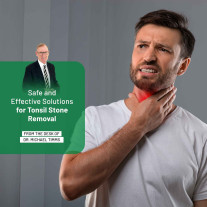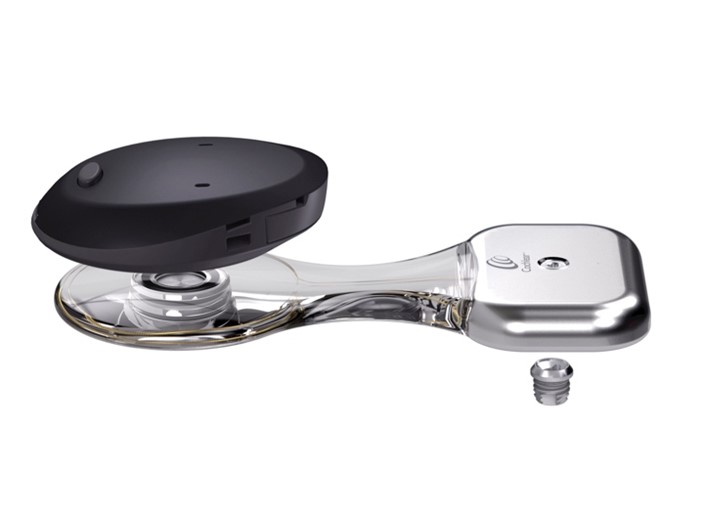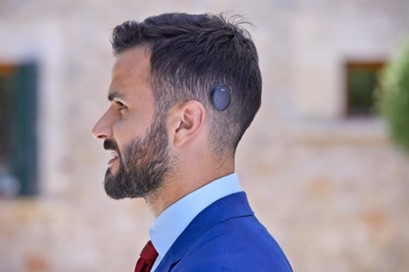All About Cochlear Implants; Types, Needs, Risks, Candidacy
Contact Us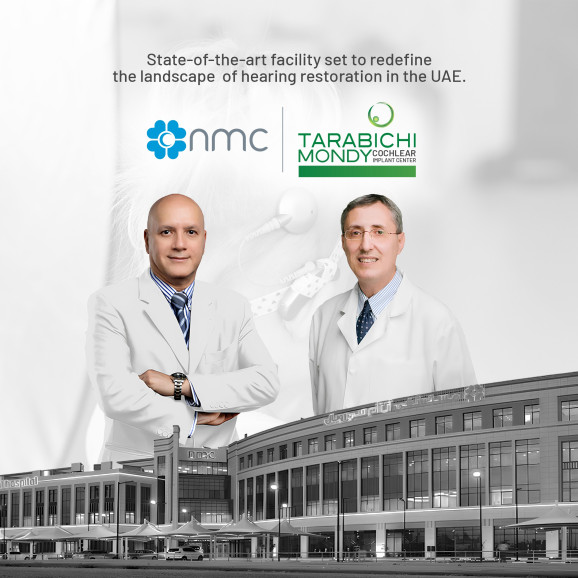
Diagnosing Hearing Loss
Hearing loss is a condition that affects the ability to hear sounds. Various factors, such as ear infections, wax build-up, aging, noise exposure, genetic disorders, or injuries, can cause it. Hearing loss can hurt a person’s quality of life, communication, education, and social interactions. Therefore, it is best if such a condition is diagnosed as early as possible and appropriate treatment and intervention is sought.
While there is no strict age limit for receiving a cochlear implant, the decision to implant is often influenced by various factors, and the age at which individuals receive cochlear implants can vary.
Children: Cochlear implants are frequently used in children who are born with hearing loss or develop severe hearing loss early in life. Early intervention, including cochlear implantation, can be crucial for language development and communication skills. Many children receive cochlear implants before the age of 2 or 3. Early intervention, especially in children, often leads to better outcomes as the brain is more adaptable during the critical period of language development.
Adolescents and Teenagers: Older children and teenagers who have not benefited significantly from hearing aids may also be candidates for cochlear implants. The decision is often based on factors such as the degree of hearing loss, the potential for benefit, and the individual's communication needs.
Adults: Cochlear implants are used in adults who experience a significant decline in hearing or have been deaf for an extended period. Adults may choose to receive cochlear implants later in life for various reasons, such as a decline in hearing ability, a desire to improve communication, or changes in lifestyle.
Seniors: While less common, cochlear implants are sometimes recommended for seniors who develop severe hearing loss or experience a decline in the effectiveness of hearing aids. The decision to implant in older individuals is based on factors such as overall health, cognitive function, and communication needs.
It is important to note that the success of cochlear implants can vary from person to person, and candidacy is determined on an individual basis.
How do Cochlear Implants Work?
Cochlear solutions differ from hearing aids, which amplify sounds so damaged ears can detect them. These devices are more suitable for people with severe to profound hearing loss and without hearing aids. They work by bypassing the damaged parts of the ear and stimulating the hearing nerve directly. Cochlear solutions can work for children and adults with different types and degrees of hearing loss. They can help improve the ability to hear speech, music, and environmental sounds and enhance communication, education, and social interactions.
Cochlear solutions require a surgical procedure to implant the device, as well as a sound processor that is worn externally. The sound processor captures the sound and converts it into electrical signals sent to the implant. The implant then delivers the signals to the hearing nerve, which sends them to the brain. The brain interprets the signals as sound.
Expert ENT specialists at Tarabichi may perform different tests to diagnose hearing loss, such as physical exams, screening tests, tuning fork tests, and audiometer tests. These tests can help determine hearing loss's cause, type, degree, and configuration. Depending on the results, the ENT specialist may recommend different options for treatment and intervention, such as removing earwax, surgery, hearing aids, or cochlear implants.
Individuals with cochlear implants commonly report improvements in:
- Understanding spoken language without relying on visual cues like lip reading.
- Identifying everyday sounds in their environment.
- Listening effectively in noisy surroundings.
- Locating the source of sounds.
- Enjoying television programs, music, and telephone conversations.
- Alleviation of symptoms such as ringing or buzzing (tinnitus) in the implanted ear.
Choosing the Right Device for Cochlear Implants:
At TMCIC, our doctors only work with the best cochlear implant devices taking into consideration device durability and reliability and after implementation device care;
Durability and Reliability: Especially since cochlear implants are intended for long-term use, considering the durability and reliability of the device are essential. This includes the robustness of external components and the lifespan of internal components.
Rehabilitation and Support Services: Adequate rehabilitation is crucial for optimizing the benefits of cochlear implantation thus assessing the availability of rehabilitation programs and support services offered by the manufacturer or healthcare providers is a key factor of consideration.
The ultimate decision-making process includes the collaboration of the patient’s desires as well as those of the implant team (physician, audiologist, family).
Cochlear Implants and Other Implantable Hearing Devices
1. Cochlear implants:
Cochlear implant is typically consisting of internal part that should be implanted under the scalp skin and external part that gathers the sound wave, transformed it into electric current and deliver it to the internal part (Fig. ??). The internal part will deliver those electric signals to the inner ear via an electrode that is inserted in the cochlea. The electrode has multiple metal contacts that stimulate the nerve endings in the cochlea and enable the patient to resume hearing and speech understanding.
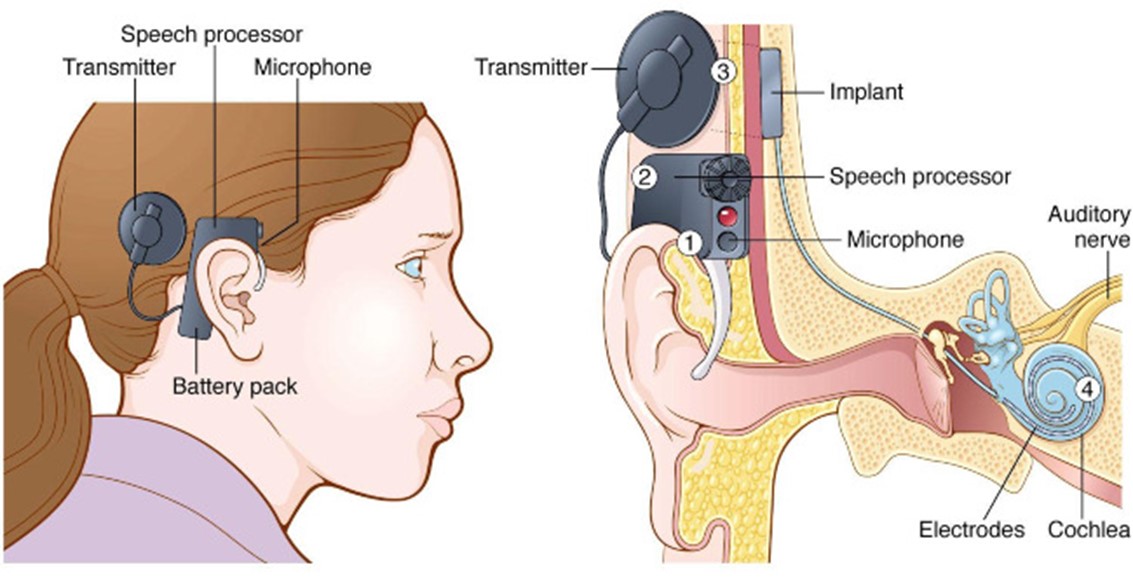
2. Auditory brainstem implants:
Auditory brainstem implants (ABI) have the same idea as cochlear implants but the electrode is placed directly over the cochlear nucleus in the brainstem, thus bypassing the cochlea and cochlear nerve. It is indicated in some rare situations where the cochlea or the auditory nerve are bilaterally congenitally absent. It is also indicated in bilateral post-meningitis total ossification of the cochlea and after bilateral acoustic neuroma surgeries when the auditory nerve can be preserved (as in patients with neurofibromatosis type 2). Due to rarity of the cases, only few centers in the world are performing this type of surgery.
3. Other implantable hearing devices:
These include bone anchored implants and middle ear implants. They are indicated both in children and adults with various degrees and types of hearing loss, for example, unilateral or bilateral conductive or mixed hearing loss in patients who cannot use conventional hearing aids. The typical recipients are patients with microtia and meatal atresia or those who have draining or stenotic ear canals. Like cochlear implants, successful results require the cooperation between a team of skilled experienced surgeons and audiologist.
Bone anchored implant (Osia)
When to Consider Cochlear Implants?
For Adults
Cochlear implants could be considered for adults with significant hearing loss that is not effectively helped by hearing aids. Here are some situations when considering cochlear implants might be appropriate for adults:
Severe Hearing Loss:
It is challenging to understand speech when someone has severe hearing loss, even with powerful hearing aids.
Limited Benefits from Hearing Aids:
If hearing aids do not provide enough improvement in understanding speech or hearing sounds, despite proper use.
Difficulty in Daily Activities:
When hearing loss affects daily activities, such as conversations, phone calls, or participating in social events, and impacts the overall quality of life.
Speech Understanding Challenges:
If there are difficulties in understanding speech, especially in noisy environments, despite using hearing aids.
Worsening Hearing Loss:
When hearing loss is progressively getting worse, and hearing aids are no longer sufficient to maintain effective communication.
Willingness to Explore Options:
When the individual is open to exploring different options for improved hearing and is willing to commit to the rehabilitation process that comes with cochlear implantation.
Health Considerations:
If the person is in good overall health and can undergo the surgery and rehabilitation process associated with cochlear implants.
Motivation for Change:
When there is a strong motivation to improve communication and hearing ability, cochlear implants require a commitment to the rehabilitation process for optimal outcomes.
Individuals considering cochlear implants should consult an ENT specialist at Tarabichi to assess their unique hearing needs, health, and preferences. Cochlear implants may significantly improve the quality of life for adults with severe hearing loss when traditional hearing aids prove insufficient.
For Children
Cochlear implants might be considered for children with severe hearing loss who cannot be effectively helped with hearing aids. Here are few situations when cochlear implants could be considered for kids:
Profound Hearing Loss:
When a child has very severe hearing loss and regular hearing aids are not providing enough help.
Limited Speech Development:
If a child is having difficulty developing speech and language skills due to significant hearing loss.
Struggling in School:
Hearing loss affects a child's ability to learn and participate in school activities.
Little Improvement with Hearing Aids:
If traditional hearing aids do not benefit the child, their hearing loss continues to impact daily life.
Early Intervention Age:
Cochlear implants are often considered early in a child's life to provide them with access to sound and support their language development.
Support from Parents:
When parents are committed to helping their child through the cochlear implant process, including surgery, rehabilitation, and ongoing care.
Motivation for Improved Hearing:
If the child and their family are motivated to improve their ability to hear and communicate.
Addressing ENT concerns early on can prevent complications down the road. Consult an ENT specialist today for proactive health management.
Knowing the Process of Cochlear Implantation
Successful outcomes after cochlear implant surgery requires interdisciplinary and multidisciplinary cooperation of highly motivated experienced team. In ideal situation, the typical cochlear implant team may have the following members:
- ENT Surgeons with special expertise in ear surgeries (otologists).
- Audiologists.
- Speech and language pathologists.
- Pediatric Neurodevelopmental team (pediatric neurologist, pediatric occupational therapists, and pediatric clinical psychologist).
- Geneticists with access to genetic testing.
- Service coordinators/specialized nurse.
- Social workers.
- Others (neuroradiologists, pediatric cardiologist, pediatric anesthetists and pediatric ophthalmologist).
Cochlear implantation is a surgical procedure to help individuals with severe to profound hearing loss. The process involves several steps: preparation, surgery, post-operative care, and rehabilitation. Below is a general overview of the preparation, procedures, aftercare, and financial aspects of cochlear implants. It is important to note that specific details may vary based on the individual case and age.
Preparation:
- Audiological Assessment:
A thorough hearing evaluation is conducted to determine the extent of hearing loss and assess the suitability for a cochlear implant. - Medical Evaluation:
A medical examination ensures the implanter is suitable for surgery and has no contraindications. - Counseling:
Parents and caregivers receive counseling about the benefits, risks, and expectations of cochlear implantation.
Surgical Procedure:
- Anesthesia:
The patient is placed under general anesthesia. - Incision:
A small incision is made behind the ear to access the cochlea. - Electrode Insertion:
The electrode array is carefully inserted into the cochlea. - Receiver-Stimulator Placement:
The internal receiver stimulator is secured under the skin behind the ear. - Wound Closure:
The incision is closed with sutures.
Aftercare:
- Hospital Stay:
The patient may need to stay in the hospital for a day or two for monitoring. - Recovery:
There is a recovery period, and specific post-operative instructions are provided. - Activation:
Several weeks after surgery, the external speech processor is activated. - Rehabilitation:
Especially in children, ongoing therapy and rehabilitation are crucial for the child to adapt to and develop auditory skills using the cochlear implant.
Challenges in management of Cochlear Implants
Multidisciplinary and interdisciplinary approach by a highly experienced team is needed since cochlear implantation is a life-changing surgery. Especially, Children with hearing loss have a short time window, during which hearing should be restored. Delay in diagnosis and proper management can affect the speech and language production for the rest of a patient’s life.
The problem becomes more pronounced if surgery is indicated where healthcare professionals are expected to spend considerable time with the family for proper counselling. Postoperatively, more time is needed for programming and testing the implant performance especially in infants and very young children. The same principles apply for speech therapy where dedicated specialized team with experience in AVT (auditory verbal therapy) Should concentrate on children with hearing loss. Children needs also to be followed up in the school with close interaction with their teachers to monitor their educational progress.
Many children with hearing loss have in addition other developmental and behavioral issues. Optimum management of those patients needs multidisciplinary approach with a competent pediatric neurodevelopment team. In an ideal world, the team members should set together and discuss every case in details in weekly meetings.
Our Specialists
The Surgeons: our surgical team consists of two highly experienced cochlear implants surgeons;
- Dr. Mondy Hammad:
Dr. Mondy Hammad is a consultant ENT surgeon who is well-known both nationally and internationally as an experienced ear and cochlear implant surgeon. He started his training in cochlear implant field back in 1995 in ENT department, University of Wuerzburg, Germany. He then completed his cochlear implant training in University of Freiburg, Germany in 2001, where he also got the German Board of Otolaryngology-Head and Neck surgery. He is professor of Otolaryngology- Head and Neck Surgery, Cairo University, Egypt. He helped in founding the cochlear implant program in Cairo University, Egypt in 1998. He then founded the first governmental cochlear implant program in UAE in Mafraq hospital in 2008. He was involved in doing almost 1000 implants in Germany, Egypt, and UAE. He also participated as an expert in the field in helping other developing countries like Sudan in establishing their cochlear implant program.
Dr. Mondy has done the highest number of cochlear implant surgery done by one surgeon in the UAE and also the highest number of surgeries done in one center. For instance, he has done 126 cochlear implant surgeries (104 patients of whom 22 bilateral surgeries) from January 2021 till June 2023, which is the largest number of surgeries done in one center by single surgeon in UAE during this period.
He did many difficult revision cases and cases with complex cochlear malformation. He is experienced in hearing and structure preservation surgeries that have proved to bring better hearing results. He did the first bilateral cochlear implant surgery in a child younger than 12 months old in UAE in 2010. He also operated on the youngest child in UAE. He described a novel technique to treat implant site infection without the need to remove the implant.
Dr. Mondy participated in many national and international meetings with lectures and panel discussions about cochlear implants. The cochlear implant program has won the Arab Heath Award for excellence in surgery in 2010). He is a member of the American Cochlear Implant Alliance.
Besides cochlear implants, he is also a pioneer in bone anchored and middle ear implants. He did the second transcutaneous bone anchored implant in the Middle East and the first fully implantable middle ear implant in the Middle East in 2012. He did the highest number to date of doing active bone implant (Osia) in UAE.
Beside the implant surgery, Dr. Mondy is an expert in middle ear surgery where he did thousands of cholesteatoma cases other middle ear surgeries as tympanoplasties, ossiculoplasties and stapedectomies. He is a referral in the UAE for difficult ear surgeries including multiple revisions or extension of the disease to the skull base.
2. Dr. Muaaz Tarabichi
Dr. Muaaz Tarabichi is a consultant ENT surgeon who pioneered cochlear implant surgery in UAE. He started his first implant surgery in 2005. Since then, he has experienced more than 250 cochlear implant surgeries. Dr. Tarabichi is considered worldwide as a pioneer in Endoscopic Ear and Sinus Surgery. For the last 30 years he has spearheaded and established groundbreaking and revolutionary medical techniques in the field, including the Tarabichi Stitch for Endoscopic Ear Surgery, as well as the Eustachian Tuboplasty Technique known as Endoscopic Transtympanic Eustachian Tube Dilatation.
‘Endoscopic Ear Surgery was first described in 1992 by Professor Ahmed El-Guindy and pioneered by Dr Muaaz Tarabichi in Dubai during the late 90s. His contributions to the field have led to him being recognized globally as the father of endoscopic ear surgery.
Dr. Tarabichi is the Co-Founder of Tarabichi Stammberger Ear and Sinus Institute (TSESI) in Dubai UAE, the Institute is a group of ENT surgeons and healthcare research personnel whose sole mission is to improve the quality, safety, effectiveness, and cost of medical interventions in Ear and Sinus Surgery (www.tarabichient.com/tsesi).
Dr. Tarabichi is the Chair, International Advisory Board (IAB), American Academy of Otolaryngology-Head and Neck Surgery Foundation. He is also the Chairman, Middle East Academy of Otolaryngology, Chairman Otology Programme, Middle East Update in Otolaryngology.
Dr. Tarabichi is the Founding Board Member of the IWGEES, the International Working Group on Endoscopic Ear Surgery.
IWGEES is a global group of highly specialized and motivated Otolaryngologists and Otologists who are mastering Endoscopic Ear Surgery, believing in the advantages that endoscopy provides. The group seeks to foster excellence in technique, instrument development and research in the field.
Dr. Tarabichi is the Founding Member of the AAOCI, the Arab Academy of Otology and Cochlear Implant.
He also sits on the steering committee for GCIN, Global Cochlear Implant Access Network.
He Was the Head of ENT Department, Cochlear Implant Center of Excellence, American Hospital Dubai, UAE.
Dr. Tarabichi published (5) Books and more than (87) scientific articles and studies in indexed journals (all can be found on PubMed, ResearchGate and google scholar and lectures extensively on the subject and has received multiple awards including the American Academy Excellence in Research Award.
The Tarabichi Stammberger Ear & Sinus Institute (TSESI) has granted over 50 Scholarship’s to young Otolaryngologists from 20 different countries around the world. This scholarship program is designed to train young Otolaryngologists with special emphasis for trainees from emerging countries to acquire basic to advanced Endoscopic Ear & Sinus Surgical Techniques.
TSESI is sponsoring 7 Trainees and Young Otolaryngologists for their travel, accommodation, and registration during each hands-on cadaver dissection course.
Much of Dr. Tarabichi’s professional life has been centered on innovating, advocating, and teaching Endoscopic Ear and Sinus Surgery, he maintains an active interest in issues of hearing health in emerging countries as well as issues of hearing devices for the poor across the globe.
Our surgeons will be supported by a team of international experts in the field of cochlear implantation including but not limited to
- Research Specialists: who will add value to our existing team of surgeons.
- Audiologists: English and Arabic speaking audiologists who have long and extensive experiences in pediatric audiology, especially preoperative assessments, and postoperative mapping of cochlear implant candidates.
- Speech and language therapists: Highly experienced staff that will help enable better therapy sessions aimed at improving everyday communication.
Costs and Payments
- Device Cost:
The cost of the cochlear implant device itself can be substantial. This includes the internal and external components. - Surgery and Hospital Fees:
Surgical procedures, anesthesia, and hospital stays contribute to the overall cost. - Diagnostic Tests and Evaluation:
Costs associated with pre-implantation evaluations, including audiological assessments and medical examinations. - Follow-up Appointments:
Regular follow-up appointments, adjustments, and mapping sessions may incur additional charges. - Rehabilitation Services:
Ongoing therapy and rehabilitation services may have associated costs.
Parents or caregivers must consult with ENT specialists at Tarabichi Mondy Cochlear Implant Center, including audiologists and surgeons, to get detailed and personalized information based on the child's circumstances. The costs and payment options vary widely based on location, healthcare providers, and individual insurance coverage.
For Consultations and Appointments , reach out to us at
Abu Dhabi: +971 50 608 6370, +971 50 608 6370(Whatsapp)



